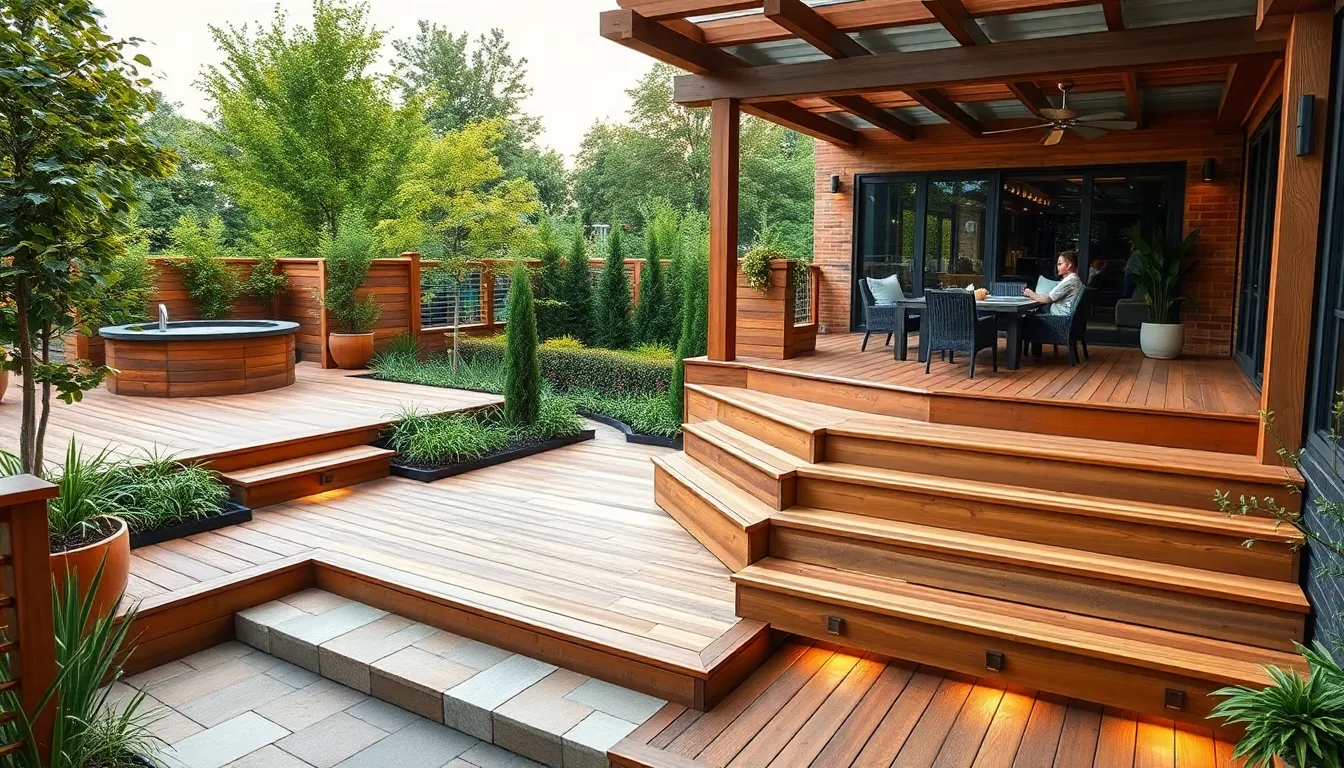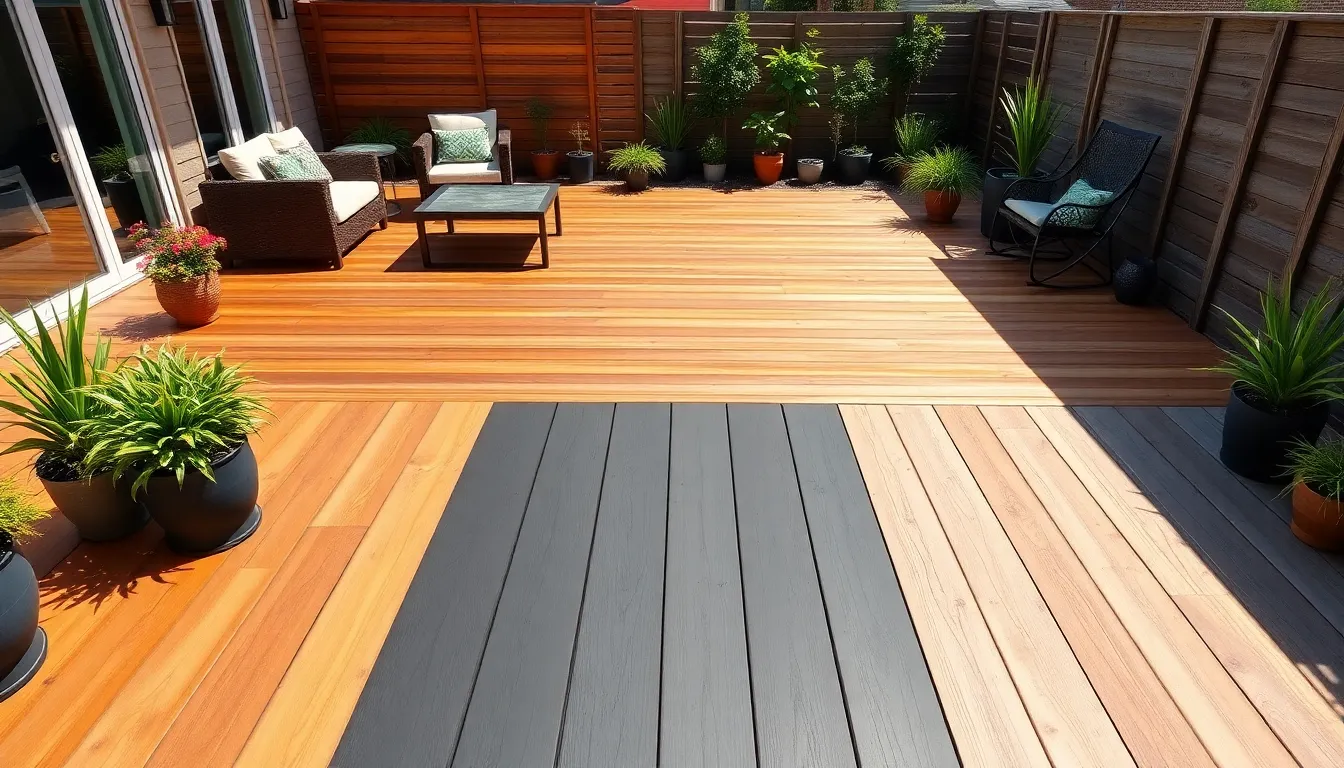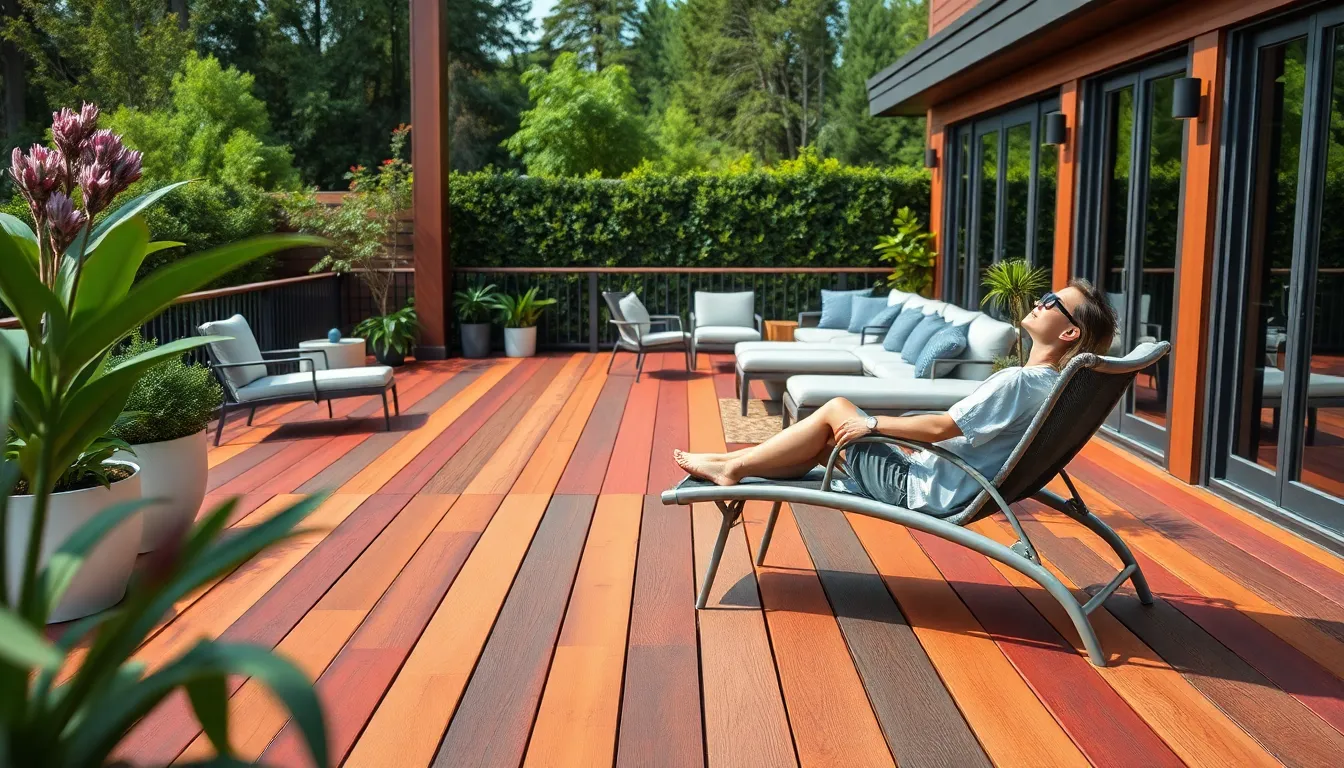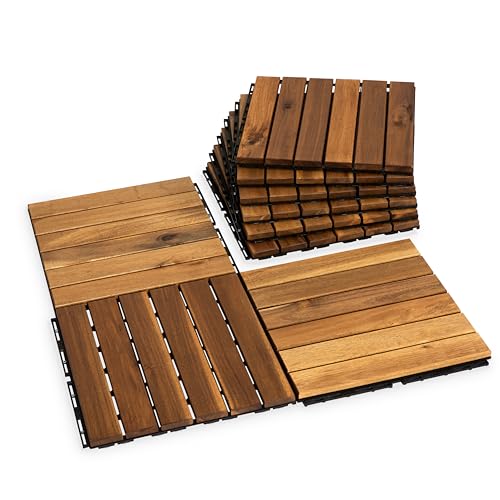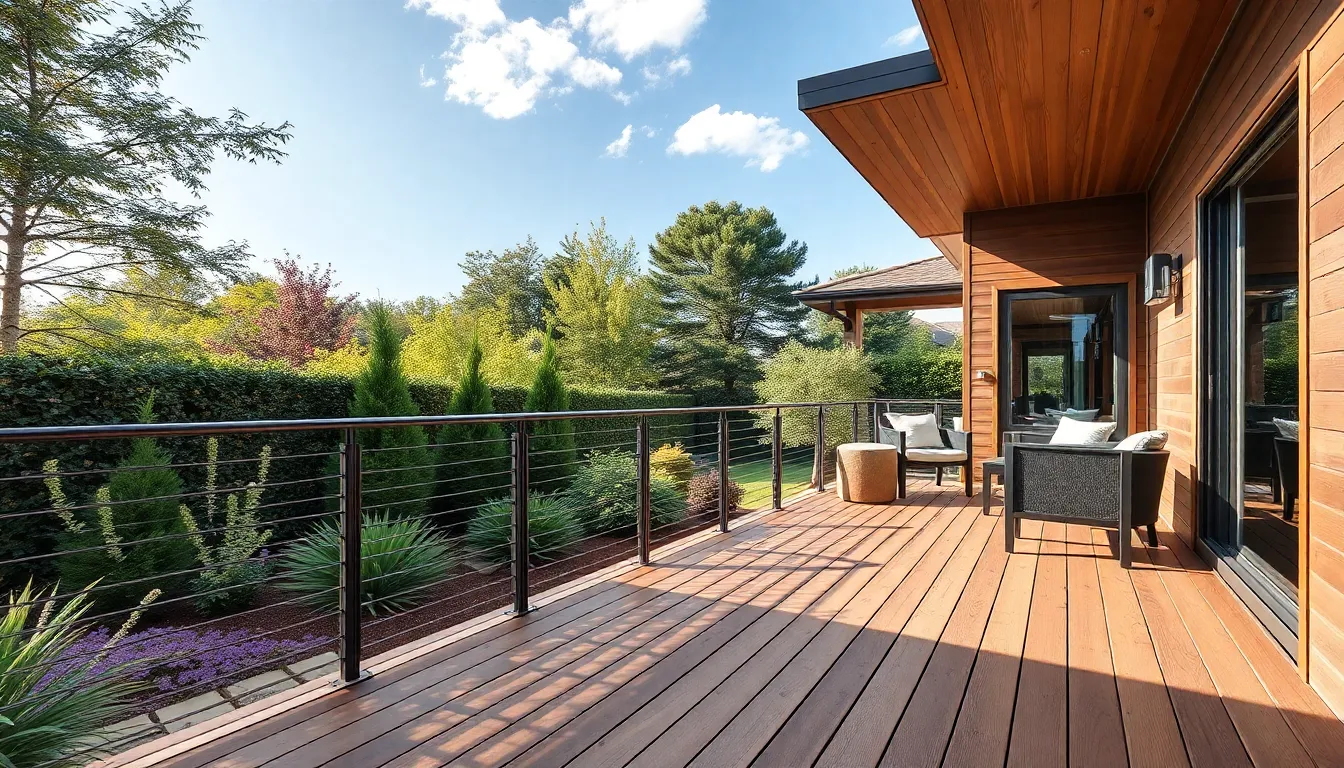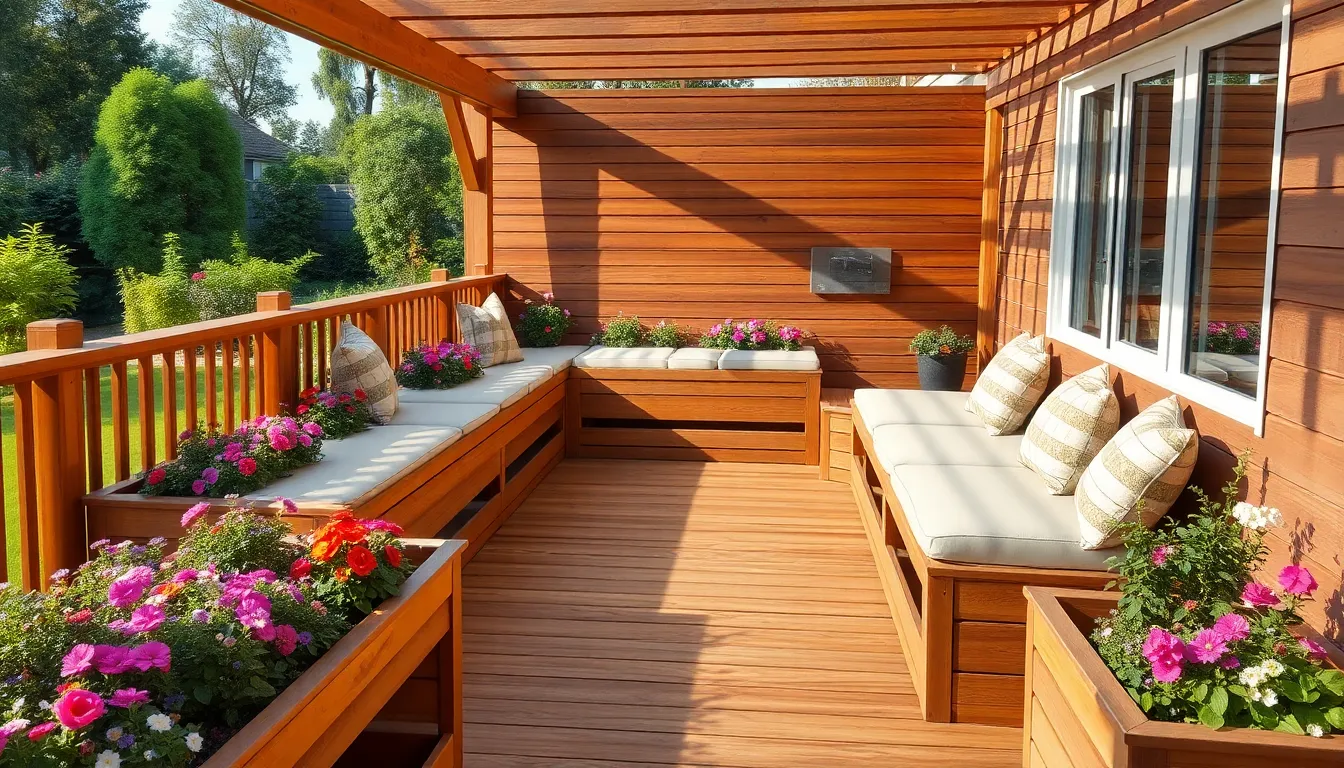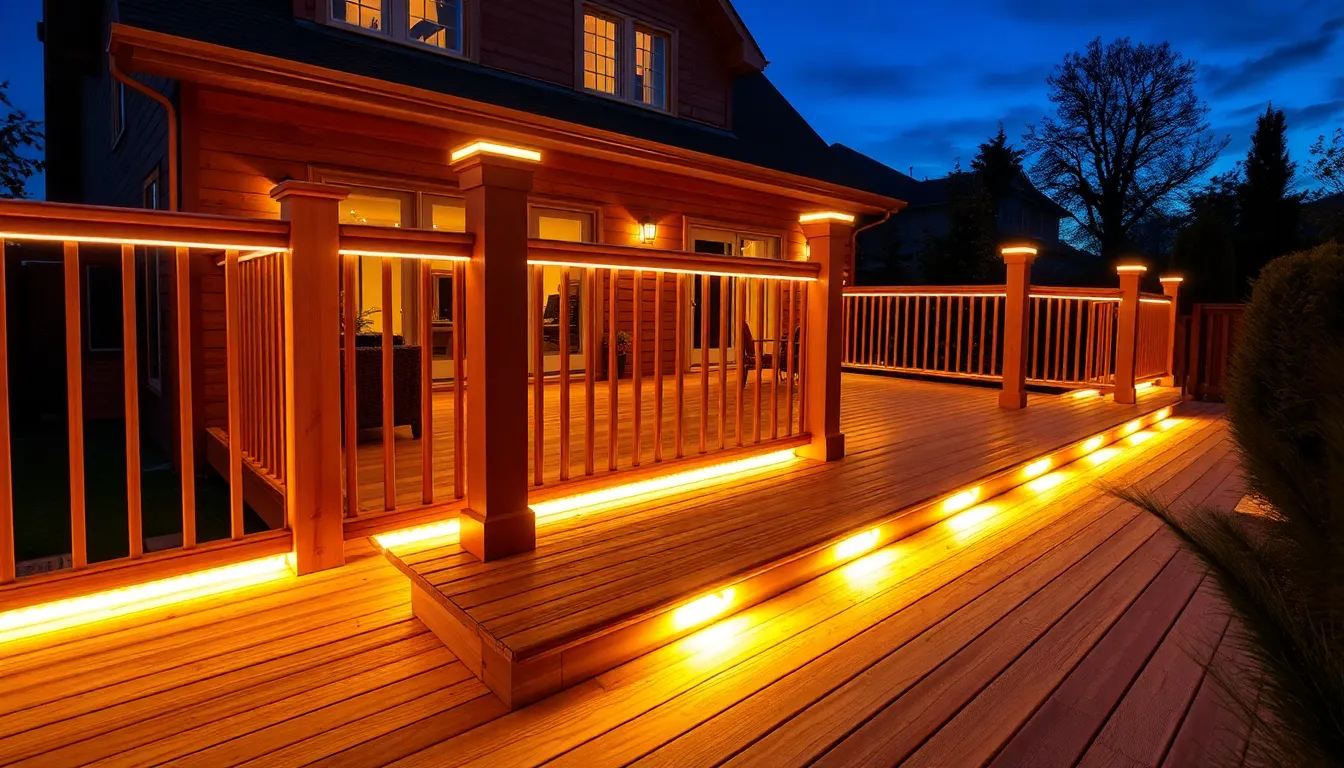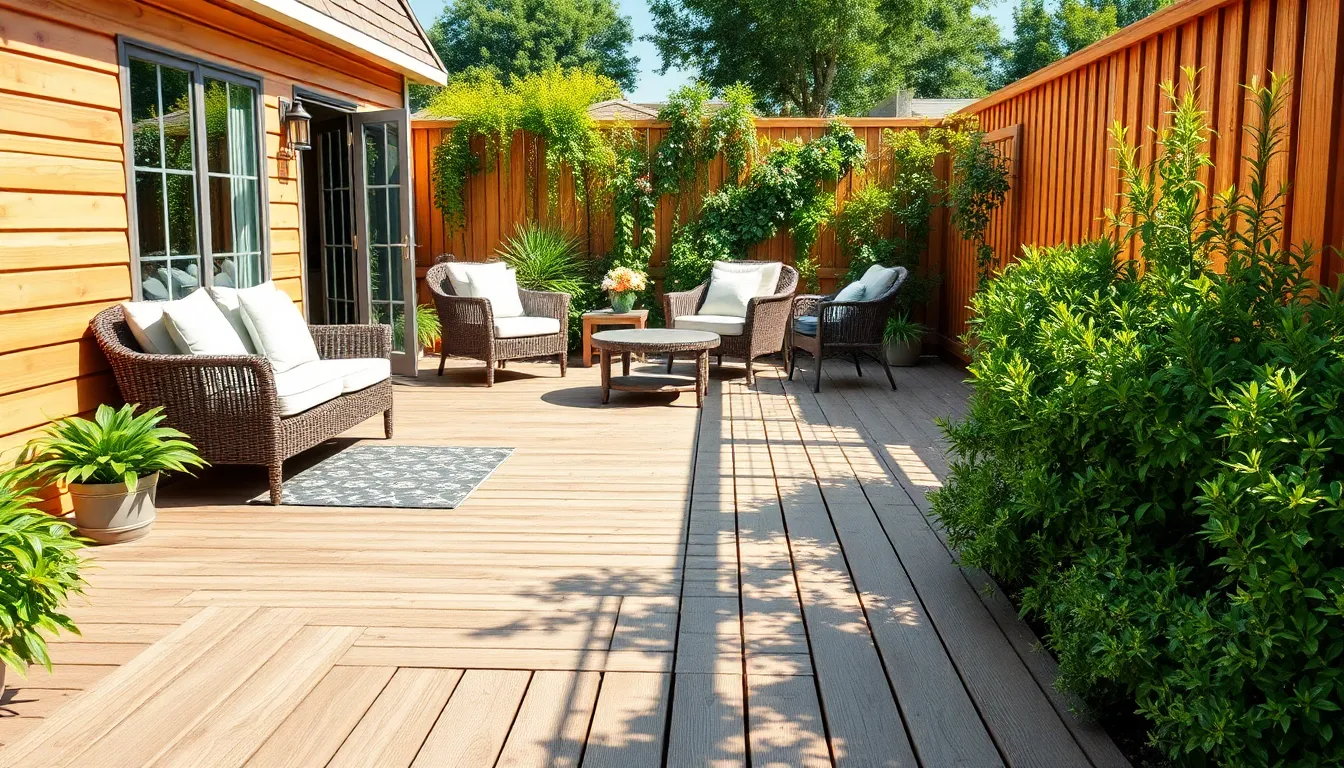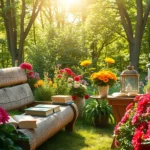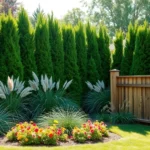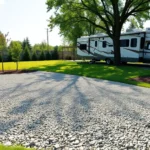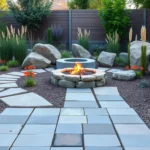We all dream of creating that perfect outdoor sanctuary where we can unwind after long days and entertain friends on warm summer evenings. Timber decking transforms ordinary backyards into stunning outdoor living spaces that seamlessly blend natural beauty with functional design. Whether you’re working with a sprawling garden or a compact urban patio there’s a timber deck solution that’ll elevate your outdoor experience.
From sleek modern platforms to rustic elevated walkways timber decking offers endless possibilities to match your home’s architecture and personal style. We’ve discovered that the right deck design doesn’t just add value to your property—it creates memories that last a lifetime.
Ready to explore timber decking ideas that’ll make your neighbors green with envy? We’re diving into creative designs practical layouts and innovative features that’ll help you build the outdoor retreat you’ve always wanted. Let’s turn your outdoor space into the ultimate gathering spot.
Traditional Timber Deck Designs for Classic Outdoor Appeal
Classic timber deck designs never go out of style, offering timeless elegance that complements any outdoor sanctuary. These foundational patterns create the perfect backdrop for memorable gatherings while adding substantial value to your property.
Horizontal Plank Layouts
Horizontal plank installations represent the most popular choice among homeowners seeking clean, streamlined outdoor spaces. We recommend using boards ranging from 5 to 8 inches wide to create visual balance and minimize the number of seams. Cedar, pressure-treated pine, and composite materials work exceptionally well for this traditional approach.
Straight runs across the deck’s length make smaller spaces appear larger while creating uninterrupted sight lines. Installation becomes straightforward when you maintain consistent spacing between boards, typically 1/4 to 3/8 inch gaps for proper drainage and expansion.
Perpendicular arrangements to your home’s exterior walls create visual depth and draw attention toward focal points like gardens or water features. This orientation works particularly well for rectangular deck shapes and provides excellent structural stability when properly supported.
Diagonal Pattern Installations
Diagonal decking transforms ordinary outdoor spaces into ever-changing gathering areas through strategic board placement at 45-degree angles. We’ve found this pattern adds visual interest while making deck surfaces appear wider than traditional horizontal layouts.
Single diagonal runs create sophisticated movement across your deck surface, perfect for modern outdoor sanctuaries. Installation requires precise measurements and additional waste factor of approximately 15-20%, but the dramatic results justify the extra material costs.
Double diagonal patterns feature boards running in opposing directions from a central point, creating striking geometric designs. These installations work best on larger decks where the pattern has room to develop fully, typically requiring professional installation for optimal results.
Border framing around diagonal sections provides clean transitions and helps contain the pattern within defined spaces. Using contrasting timber colors or species enhances this effect, creating natural boundaries between different deck zones.
Herringbone and Parquet Styles
Herringbone timber arrangements bring sophisticated European styling to your outdoor sanctuary through intricate geometric patterns. We recommend using shorter board lengths, typically 2 to 4 feet, to achieve the characteristic zigzag appearance that defines this classic design.
Traditional herringbone features boards meeting at 90-degree angles in alternating directions, creating a woven appearance across your deck surface. This pattern requires careful planning and precise cuts but delivers unmatched visual appeal for formal outdoor entertaining areas.
Parquet squares combine multiple short boards into geometric blocks, then arrange these units in various orientations across your deck. Each square typically measures 18 to 24 inches, allowing for creative combinations that showcase different timber grain patterns.
Mixed pattern installations incorporate herringbone sections alongside simpler plank layouts, creating distinct zones for different outdoor activities. Dining areas benefit from the formal appearance of herringbone, while lounging spaces work well with horizontal planks for a more relaxed atmosphere.
Multi-Level Timber Decking Ideas for Dynamic Outdoor Spaces
Building on traditional patterns and layouts, we can create outdoor sanctuaries with incredible depth and functionality through multi-level timber decking designs. These ever-changing structures transform flat outdoor areas into captivating spaces that define different zones while maximizing the natural beauty of timber materials.
Raised Platform Designs
Elevated timber decks create distinct entertainment areas that rise above ground level to serve as dedicated dining spaces, lounges, or social hubs. We position these platforms to capture better views of gardens, landscapes, or surrounding areas while improving airflow throughout the outdoor space.
Moisture protection becomes a natural benefit when we raise decks above ground level, preventing water damage and extending the lifespan of our timber investment. Built-in seating, planters, and storage answers integrate seamlessly into raised platform designs to maximize functionality without compromising aesthetics.
Transitional flow from indoor to outdoor spaces improves significantly with raised platforms that connect directly to home entrances via steps or walkways. These elevated designs create natural gathering spots that feel like outdoor rooms while maintaining the warmth and beauty of natural timber materials.
Sunken Deck Configurations
Below-ground timber decks offer cozy retreats that nestle into the industry for intimate gatherings or peaceful relaxation areas. We design these sunken configurations to provide natural wind protection and enhanced privacy while maintaining an open, welcoming atmosphere.
Sheltered environments emerge naturally when we construct decks below surrounding ground level, creating perfect spots for conversation areas or quiet reading nooks. The timber decking material proves ideal for sunken installations due to its durability and ability to handle varying moisture conditions.
Integrated seating and landscaping around sunken deck perimeters enhance both ambiance and functionality, creating seamless transitions between the deck surface and surrounding garden elements. These designs work particularly well for fire pit areas or hot tub installations where lower profiles add to the intimate setting.
Terraced Timber Structures
Stepped timber levels follow natural land slopes or create artificial elevation changes that provide multiple functional zones throughout outdoor spaces. We design terraced structures to accommodate dining areas on upper levels, lounging spaces on middle tiers, and garden zones on lower sections.
Creative elevation management through terracing improves drainage naturally while adding important visual interest to previously flat outdoor areas. These multi-level timber designs can incorporate stairs, railings, and integrated lighting systems that enhance both safety and aesthetic appeal.
Seamless connections with existing features like patios, pools, and outdoor kitchens become possible when we plan terraced timber structures to flow harmoniously throughout the industry. Each level serves a exact purpose while contributing to the overall functionality of our ever-changing outdoor sanctuary.
Timber Deck Color and Stain Options for Outdoor Aesthetics
Selecting the right color and stain for your timber decking transforms the entire aesthetic of your outdoor space. We’ll explore three distinct approaches that complement different design visions and outdoor environments.
Natural Wood Finish Choices
Natural wood finishes showcase the authentic beauty of timber by highlighting its inherent grain patterns and color variations. Popular tropical hardwoods like iroko, balau, ipe, and cumaru deliver rich natural hues spanning from golden browns to deep reddish tones. These species offer exceptional durability and natural resistance to insects and weather conditions.
We recommend applying clear or lightly tinted sealers to preserve the wood’s original appearance while providing essential protection against UV damage and moisture. This approach maintains the organic beauty of your decking while ensuring long term performance in outdoor conditions.
Bold Stain Color Applications
Bold stains create dramatic visual impact by introducing vibrant colors that complement your outdoor design scheme. Modern stain options range from deep espresso browns to subtle grays and even soft blues or greens that match contemporary garden aesthetics. These colors coordinate beautifully with outdoor furniture and industry elements while expressing your personal style preferences.
Quality weather resistant stain products formulated specifically for exterior wood applications ensure your color choice remains vibrant over time. Staining also adds an essential protective layer that extends the life of your timber decking beyond its aesthetic benefits.
Weathered and Distressed Finishes
Weathered and distressed finishes deliver rustic charm with an aged appearance that complements outdoor settings perfectly. Techniques include light sanding or applying specialized stains that replicate sun bleached or driftwood effects in grays and muted browns. This style naturally conceals wear patterns over time while adding distinctive character to your decking.
Some products actually accelerate the weathering process safely, creating that coveted vintage look without years of natural aging. We find this finish particularly effective in coastal or countryside landscapes where a softer, more relaxed aesthetic enhances the natural surroundings.
Composite Timber Decking Alternatives for Low-Maintenance Outdoor Areas
Moving beyond traditional staining and finishing options, composite decking provides homeowners with innovative answers that combine the beauty of timber with modern durability. These alternatives offer exceptional longevity while reducing the maintenance demands of outdoor living spaces.
Wood-Plastic Composite Benefits
Wood-plastic composite decking delivers the perfect balance of natural aesthetics and practical performance for busy homeowners. This innovative material combines approximately 60% recycled hardwood fibers with 40% recycled plastics, creating boards that resist rot, warping, splintering, and pest damage.
Maintenance requirements drop dramatically with wood-plastic composites since they eliminate the need for annual sanding, varnishing, or painting. UV resistance ensures colors remain vibrant throughout changing seasons, while temperature fluctuations cause minimal expansion and contraction compared to natural wood.
Long-term savings offset the higher initial investment, with warranties extending up to 30 years or more from manufacturers. Brands like Cladco and TimberTech offer advanced features such as full capping for superior mold and rot protection, slip-resistant surfaces, and cooler-touch technology for summer comfort.
Color variety includes multiple finishes from original smooth surfaces to realistic woodgrain textures, though painting isn’t possible once installed. Environmental benefits increase through the use of recycled content, making these composites an eco-friendly choice for sustainable outdoor design.
Bamboo Composite Options
Bamboo composite decking emerges as a rapidly renewable alternative that outperforms traditional tropical hardwoods in sustainability. This innovative material combines strong bamboo fibers with protective resins or plastics, creating weather-resistant boards that maintain natural aesthetics.
Strength characteristics rival those of conventional composites while offering superior environmental credentials through bamboo’s fast growth cycle. Durability increases significantly when bamboo fibers receive proper resin treatment, resulting in boards that withstand moisture, UV exposure, and temperature variations.
Natural appearance preservation remains a key advantage, as bamboo composites retain organic textures and grain patterns that complement outdoor environments. Installation processes mirror standard composite procedures, making these boards compatible with existing deck construction methods.
Recycled Material Deck Boards
Recycled material deck boards maximize environmental benefits by incorporating high percentages of post-consumer and post-industrial waste content. These boards divert substantial amounts of wood fibers and plastics from landfills while maintaining the performance characteristics of premium composite decking.
Environmental impact reduction becomes important as manufacturers increase recycled content percentages without compromising structural integrity. Sustainability certifications often accompany these products, supporting eco-friendly landscaping initiatives and green building practices.
Performance standards remain consistent with traditional composites, offering resistance to moisture, insects, and weathering damage. Cost effectiveness improves over time through reduced maintenance requirements and extended product lifespans that justify initial investments.
Aesthetic options continue expanding as manufacturers develop new color combinations and surface textures using recycled materials, proving that environmental responsibility doesn’t require sacrificing visual appeal in outdoor deck design.
Timber Deck Railing and Balustrade Ideas for Safety and Style
Safety and style combine seamlessly when we choose the right railing and balustrade systems for our timber decks. Modern design trends favor clean lines and unobstructed views while maintaining essential safety standards.
Horizontal Slat Railings
Horizontal slat railings deliver a sleek contemporary look that complements our timber decking perfectly. These modern systems arrange timber slats horizontally between posts to create clean streamlined barriers that maintain open views while providing essential safety. We can choose between painted finishes for bold color statements or natural wood finishes that highlight the timber’s inherent beauty.
Balance becomes key with horizontal slat designs since they offer privacy without completely blocking visibility to surrounding areas. The spacing between slats allows air circulation while creating defined boundaries for our outdoor spaces. Installation proves straightforward for DIY enthusiasts while professional installation ensures perfect alignment and structural integrity.
Cable Wire Railing Systems
Cable wire systems provide unobstructed views with minimal visual impact on our deck designs. Stainless steel cables stretch between timber posts to create transparent barriers that preserve scenic views while meeting safety requirements. These systems work exceptionally well for elevated decks where we want to maximize sight lines to gardens pools or natural landscapes.
Durability stands out as a major advantage since stainless steel cables resist weather corrosion and require minimal maintenance over time. Tensioning systems allow us to adjust cable tightness as needed to maintain proper safety standards. The combination of natural timber posts with sleek metal cables creates striking modern aesthetics that enhance our outdoor living spaces.
Glass Panel Balustrades
Glass panel balustrades create sophisticated minimalist barriers that offer maximum transparency while ensuring safety. Timber posts frame tempered glass panels to combine the warmth of natural wood with the clean elegance of glass surfaces. These systems work particularly well around pool areas and elevated patios where we want uninterrupted views.
Light flow remains unrestricted with glass panels allowing our outdoor spaces to feel open and connected to surrounding environments. Maintenance involves regular cleaning to keep glass surfaces clear but the visual impact justifies the upkeep requirements. Safety glass meets building codes while providing wind protection for comfortable outdoor dining and entertaining areas.
Integrated Timber Deck Features for Enhanced Outdoor Living
We can transform timber decking from simple flooring into comprehensive outdoor living systems through strategic integration of functional features. These built-in elements maximize space efficiency while creating seamless connections between form and function.
Built-In Seating Answers
Built-in seating creates cozy lounging areas without requiring additional furniture purchases or placement concerns. We design these integrated benches along deck perimeters or around focal points like fire pits, maximizing social interaction while maintaining clean sight lines. Multi-level decks benefit significantly from perimeter benching that follows natural elevation changes and creates distinct conversation zones.
Customization options include various wood species that match or complement existing decking materials, integrated cushion storage, and LED lighting systems built directly into bench structures. These seating answers eliminate furniture arrangement challenges while providing permanent, weather-resistant options that won’t shift during storms or require seasonal storage.
Planters and Garden Boxes
Built-in planters blend hardscape elements with living landscapes, creating natural transitions between timber surfaces and garden areas. We position these integrated garden boxes at different deck levels or along borders to introduce vibrant color bursts and soften the linear nature of timber decking. Planters function as natural room dividers, separating dining areas from lounging spaces without blocking airflow or creating visual barriers.
Strategic placement of garden boxes enhances the deck’s connection to surrounding landscapes while providing opportunities for seasonal displays, herb gardens, or low-maintenance perennial arrangements. These features create living elements that change throughout the year, ensuring the outdoor space maintains visual interest across all seasons.
Storage Compartments
Hidden storage compartments optimize outdoor space by providing practical answers for cushions, gardening tools, and outdoor entertainment accessories. We integrate these storage areas under built-in benches, within deck stair structures, or as dedicated compartments along deck edges. This approach maintains clean surface lines while eliminating clutter that typically accumulates on outdoor surfaces.
Storage integration keeps decks organized and functional without requiring separate storage sheds or containers that disrupt design continuity. Weather-sealed compartments protect stored items from moisture while maintaining easy access for frequent use items like grilling tools, outdoor games, or seasonal decorations.
Timber Deck Lighting Ideas for Outdoor Ambiance
We’ve covered the foundational elements of timber decking design, and now it’s time to illuminate these outdoor spaces for evening enjoyment. Strategic lighting transforms our timber decks into inviting retreats that extend usability well beyond daylight hours.
LED Strip Lighting Integration
LED strip lighting beneath deck railings creates subtle illumination that highlights the natural contours of timber without overwhelming the space. We recommend installing these flexible strips along the underside of handrails, where they provide gentle ambient lighting that guides movement while preserving the deck’s natural aesthetic. The warm glow from LED strips complements wood tones beautifully, creating a cozy atmosphere for evening gatherings.
Placement along deck steps offers both safety and visual appeal, as the strips outline each level change clearly. We find that LED strips work particularly well with horizontal slat railings, where the light filters through the gaps to create interesting shadow patterns on the deck surface. The energy efficiency of LED technology makes these strips cost effective for extended use throughout the evening.
Post Cap Light Fixtures
Post cap light fixtures mounted on deck post tops deliver both decorative charm and functional illumination. We position these fixtures strategically to provide soft pools of light that enhance safety while maintaining the timber deck’s natural beauty. The fixtures complement various railing styles, from traditional wood posts to modern cable systems.
Solar powered post cap lights offer an eco friendly solution that charges during the day and automatically illuminates at dusk. We’ve found these particularly effective for perimeter lighting, where they create a welcoming border around the deck space. The variety of styles available allows us to match the fixtures to our deck’s overall design theme, whether contemporary or rustic.
Recessed Deck Lighting
Recessed deck lighting involves installing small fixtures flush with deck boards or stair treads to create focused illumination without surface clutter. We embed these lights directly into the timber decking material, where they provide targeted brightness for pathways and high traffic areas. The flush installation maintains clean lines while offering practical visibility for safe navigation.
Stair lighting using recessed fixtures eliminates the hazard of uneven steps in low light conditions. We typically install one fixture per step, positioning them to illuminate the tread edge clearly. This approach works exceptionally well with multi level timber decking designs, where the lights help define each elevation change while adding a modern architectural element to the overall outdoor space.
Timber Deck Maintenance Tips for Long-Lasting Outdoor Enjoyment
Proper maintenance transforms your timber deck from a simple outdoor surface into a durable investment that enhances your home’s value and provides years of enjoyment. Strategic care routines ensure your deck withstands weather challenges while maintaining its natural beauty.
Regular Cleaning Schedules
Establishing consistent cleaning routines protects your timber deck from damaging elements that accumulate over time. Debris removal should happen weekly during peak outdoor seasons, focusing on leaves, twigs, and snow that trap moisture against the wood surface.
Monthly deep cleaning sessions using biodegradable outdoor cleaners eliminate mildew buildup and embedded dirt. Oxalic acid answers work particularly well for removing stubborn stains without compromising the wood’s integrity.
Scrubbing techniques require stiff bristle brushes that clean effectively without gouging the timber surface. Work in sections to ensure thorough coverage while the cleaning solution remains active.
Furniture relocation during cleaning prevents patchy sun fading and eliminates water pooling beneath chairs, tables, and planters. This practice also allows access to areas that typically remain covered.
Protective Coating Applications
Waterproofing products form essential barriers against moisture penetration when applied correctly to completely dry boards. Application timing requires at least 24 hours of dry weather before and after treatment to ensure proper curing.
Product preparation involves thoroughly mixing multiple containers of stain or sealant to achieve consistent color across the entire deck surface. Color variations between containers can create unsightly patches if not properly blended.
Surface preparation includes filling cracks with appropriate wood fillers or caulks before sanding smooth and applying new coatings. This step prevents water infiltration through existing damage points.
Mat selection impacts coating longevity significantly. Synthetic, breathable mats that move easily allow air circulation, while natural fiber rugs trap moisture and should be avoided for permanent placement.
Seasonal Inspection Routines
Annual inspections identify potential problems before they become costly repairs. Board assessment focuses on warping, cracking, or raised edges that compromise both safety and appearance.
Fastener maintenance involves checking and tightening loose nails or screws that affect structural integrity. Replace any corroded hardware with appropriate galvanized or stainless steel alternatives.
Vegetation management requires trimming nearby plants to maintain at least 12 inches of clearance around the deck perimeter. This distance minimizes moss, mold, and rot development while improving air circulation.
Furniture rotation promotes even wear patterns and sun exposure across the deck surface. Periodically rearranging accessories prevents permanent indentations and discoloration that reduce the deck’s overall appearance.
Conclusion
Creating the perfect timber deck transforms our outdoor spaces into stunning extensions of our homes. We’ve explored everything from traditional plank patterns to innovative multi-level designs that maximize both beauty and functionality.
The choices we make—whether it’s selecting natural wood finishes or exploring composite alternatives—directly impact our deck’s longevity and visual appeal. Modern railing systems and integrated features like built-in seating elevate these spaces from simple platforms to complete outdoor living areas.
With proper lighting answers and consistent maintenance routines our timber decks become year-round gathering spots that enhance property value. These outdoor sanctuaries offer endless possibilities for relaxation entertainment and creating lasting memories with family and friends.
Frequently Asked Questions
What are the benefits of timber decking for outdoor spaces?
Timber decking enhances backyards by combining natural beauty with functional design. It’s versatile enough for various spaces from large gardens to small urban patios. The right design increases property value while creating inviting gathering spots that foster lasting memories with family and friends.
What are some popular traditional timber deck patterns?
Popular traditional patterns include horizontal plank layouts for clean, streamlined spaces, diagonal patterns for visual interest, herringbone designs for sophisticated appeal, and parquet styles for intricate geometric designs. These patterns create distinct zones tailored to different activities while elevating the aesthetic of outdoor spaces.
How do multi-level timber decks enhance outdoor areas?
Multi-level decks add depth and functionality through raised platforms that create distinct entertainment areas with improved airflow and moisture protection. Sunken configurations provide cozy, intimate spaces, while terraced structures follow natural land slopes to create multiple functional zones and improve drainage.
What timber deck color and stain options are available?
Three main approaches include natural wood finishes that highlight timber’s inherent beauty, bold stain applications that introduce vibrant colors to complement outdoor designs, and weathered finishes that provide rustic charm with an aged appearance. Each option offers both aesthetic appeal and protective benefits.
What are the advantages of composite timber decking?
Composite decking combines recycled hardwood fibers and plastics for enhanced durability and reduced maintenance. Benefits include resistance to weathering, no need for regular staining, bamboo composite options for sustainability, and recycled material boards that maximize environmental benefits while maintaining premium quality.
What railing options work best with timber decks?
Modern railing trends favor clean lines and unobstructed views. Popular options include horizontal slat railings for contemporary appeal, cable wire systems for minimal visual impact with maximum sight lines, and glass panel balustrades for sophisticated barriers with complete transparency while ensuring safety.
What integrated features can enhance timber decks?
Built-in seating creates cozy lounging areas with customization options like integrated cushion storage and LED lighting. Built-in planters blend hardscape with living landscapes, while hidden storage compartments optimize space by keeping decks organized and functional without compromising design continuity.
How can lighting improve timber deck ambiance?
Effective deck lighting includes LED strip lighting beneath railings for subtle illumination, post cap fixtures for decorative charm and safety, and recessed lighting for focused brightness without clutter. These solutions improve safety and usability after dark while creating inviting spaces for evening gatherings.
What maintenance is required for timber decks?
Essential maintenance includes weekly debris removal, monthly deep cleaning with biodegradable cleaners, regular protective coating applications with proper surface preparation, and seasonal inspections to identify warping or loose fasteners. Proper vegetation management around the deck is also crucial for longevity.
How often should timber decks be professionally inspected?
Seasonal inspection routines are recommended to maintain deck safety and longevity. Regular professional inspections help identify potential structural issues, assess the condition of protective coatings, and ensure all fasteners and railings remain secure, preventing costly repairs and extending the deck’s lifespan.




